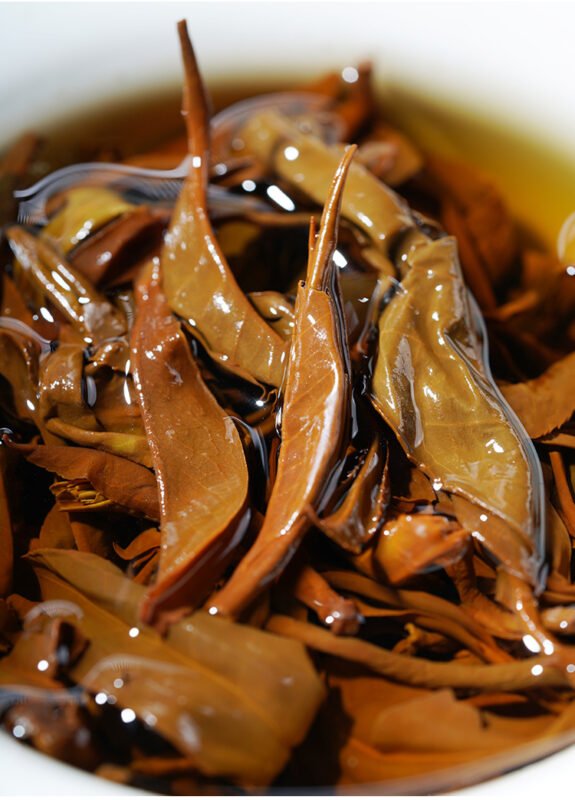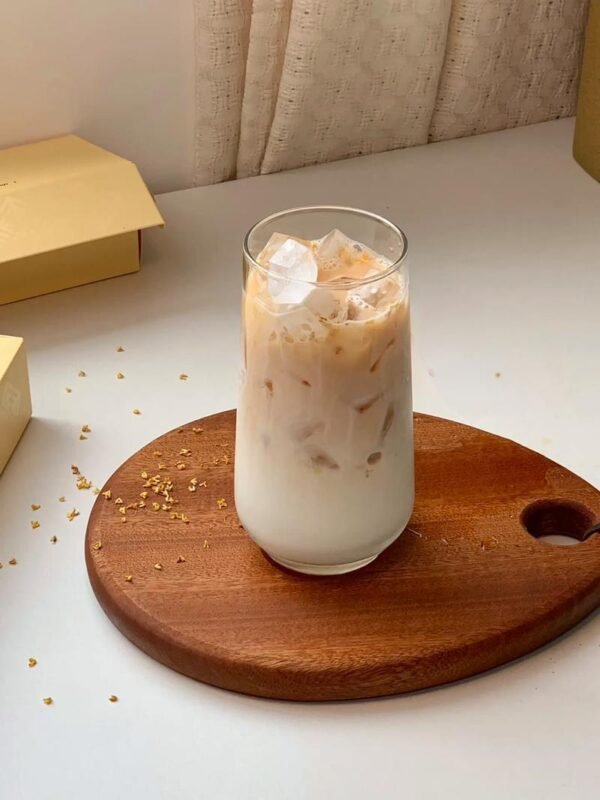Does Tea Contain Caffeine? A Global Comparison Reveals Which Tea Is the Healthiest Choice
tea contain caffeine?
Does tea contain caffeine? Compare caffeine levels in 6 global tea types, uncover the core advantages of “low-caffeine high-flavor” teas, and discover which tea is the “drink savior” for sensitive groups—especially century-old wild ancient tree tea, nature’s ultimate “caffeine-free” luxury.

1. “Does Tea Contain Caffeine?” A Look at the Global “Caffeine Content Chart”
“Can’t sleep after drinking tea?” “Is tea safe for pregnant women?”—questions about tea’s caffeine content have puzzled tea lovers worldwide for centuries. The answer is simple: nearly all teas contain caffeine (except a few specially processed ones), but levels vary dramatically.
According to the latest 2023 research from the International Tea Committee (ITC), here’s how caffeine levels (per 240ml hot brew) compare across major global tea types:
Tea Type | Caffeine Content (mg/cup) | Key Examples | Flavor Profile |
Black Tea | 40-70 | Indian Assam, Sri Lankan Ceylon | Bold, malty, with floral/fruity notes |
Oolong Tea | 30-50 | Chinese Tieguanyin, Taiwanese Dongding | Aromatic, layered, complex |
Green Tea | 20-45 | Japanese Sencha, Chinese Longjing | Fresh, grassy, vegetal |
White Tea | 15-35 | Chinese Baihao Yinzhen, Bai Mudan | Delicate, sweet, with honeyed notes |
Dark Tea | 25-50 | Chinese Pu’er (raw), Liubao | Earthy, mellow, with aged charm |
Herbal Tea | 0-5 | Chamomile, Peppermint | Caffeine-free, herbaceous |
Key Takeaways :
- Black > Oolong > Dark > Green > White > Herbal (caffeine levels from highest to lowest);
- Chinese teas generally have lower caffeine than Indian/African black teas (due to varietal and processing differences);
- White and green teas are “low-caffeine champions” (ideal for sensitive groups) but milder in flavor;
- Black/dark teas, though higher in caffeine, can be tamed via processing (e.g., Chinese black tea fermentation converts some caffeine into gentler compounds).
2. Why Chinese Tea Stands Out: 3 Core Advantages of “Low-Caffeine, High-Flavor”
Among global teas, Chinese tea’s “low-caffeine, high-flavor” profile is unmatched. It balances natural flavor with gentle caffeine levels, thanks to three unique strengths:
2.1 Varietal Advantage: Native Chinese Tea Plants Hold the “Low-Caffeine Gene”
Global tea plants originated in the intersection of Yunnan (China), Myanmar, and India’s Assam region. However, China preserves the richest diversity of native tea varietals (e.g., Longjing 43, Fuding Da Bai Cha, Wuyi Cai Cha), which naturally have lower caffeine synthase activity than “foreign varietals” (e.g., Indian Assam large-leaf tea).
- Example : Fujian Anxi Tieguanyin (a top Chinese oolong) has ~35mg caffeine per cup, while Indian Assam black tea (same tea family) packs 60mg/cup due to its large-leaf genetics.
- Scientific Backing : A 2022 study by the Chinese Academy of Agricultural Sciences found that Chinese native tea plants have 15%-20% lower “caffeine decarboxylase” activity than Indian large-leaf varieties, reducing caffeine production.
2.2 Processing Advantage: Traditional Techniques “Neutralize” Caffeine Stimulus
Chinese tea-making techniques (e.g., green tea “fixation,” black tea “fermentation,” white tea “withering”) use biochemical transformations to reduce caffeine’s harshness while enhancing flavor:
- Green Tea : High-temperature fixation (200°C+) quickly deactivates enzymes, halting excessive caffeine synthesis and preserving freshness.
- Black Tea : Fermentation (via polyphenol oxidase) binds caffeine with tea polyphenols, forming milder “theabrownins” that are gentler on the stomach.
- White Tea : Natural withering (no rolling or stir-frying) allows slow water loss, letting caffeine evaporate partially—final levels are half that of black tea.
2.3 Environmental Advantage: China’s Tea Regions Offer “Natural Caffeine Control”
China’s core tea regions (e.g., Hangzhou, Zhejiang; Wuyi Mountain, Fujian; Pu’er, Yunnan) thrive in high-altitude, low-latitude, misty climates —conditions that naturally curb caffeine overproduction:
- Cool, shaded environments slow tea metabolism, reducing caffeine accumulation (Yunnan Pu’er tea regions at 1,500m+ have 25% lower caffeine than low-altitude farms).
- High humidity and diffused light boost amino acid and polysaccharide synthesis, enhancing “fresh, sweet, aromatic” flavors (e.g., West Lake Dragon Well’s “bean-like fragrance” directly links to high amino acid content).
3. Century-Old Wild Ancient Tree Tea: The “Pinnacle” of Chinese Tea (Low Caffeine, High Energy)
If Chinese tea is the “low-caffeine, high-flavor” leader, century-old wild ancient tree tea is its “king”—with even lower caffeine and unmatched health benefits for sensitive groups.
3.1 Age Advantage: “Natural Dilution” of Caffeine Over Centuries
Century-old wild ancient tree tea uses leaves from trees over 100 years old (mostly in Yunnan’s Ailao Mountain and Wuliang Mountain primeval forests). These trees naturally have 1/3-1/2 the caffeine of commercial tea gardens (~10-20mg/cup) due to:
- Slow growth cycles : Ancient trees only flower once a year (commercial gardens yield 3-4 harvests), concentrating nutrients and slowing caffeine production.
- Deep root systems : Roots reach 5-10m, absorbing natural minerals (potassium, magnesium) that inhibit excessive caffeine synthesis.
- Minimal competition : In primeval forests, ancient trees grow without fighting weeds/shrubs, leading to calmer metabolism and lower caffeine output.
3.2 Wild Environment: “Zero Interference” for Pure, Low-Caffeine Tea
Unlike commercial tea gardens (fertilized, pesticided), century-old wild ancient tree tea thrives in primeval forest ecosystems :
- No artificial fertilizers : Relies on fallen leaves and humus, balancing amino acids and polysaccharides—caffeine feels “balanced,” not overpowering.
- Pest control by nature : Birds and insects naturally manage pests, avoiding chemicals and keeping leaves pure.
- Microclimate regulation : 90%+ forest coverage and 80%+ humidity slow tea metabolism, further reducing caffeine.
3.3 Flavor & Health: “Low Caffeine” Meets “Ultimate Vitality”
Century-old wild ancient tree tea caters to pregnant women, insomniacs, and sensitive stomachs while delivering top-tier flavor:
- Gentle on sensitive groups : A 240ml cup has just 15mg caffeine (1/3 of a latte), avoiding jitters or insomnia.
- Complex flavor profile : Perfect ratios of polyphenols, amino acids, and theaflavins create layered aromas (wild orchid, honey, pine) and a “silk-like” mouthfeel with lingering aftertaste.
- Superior health benefits : Polysaccharide levels are 2-3x higher than commercial teas (supports blood sugar regulation), polyphenols are richer (antioxidant power), and near-zero pesticides (thanks to natural growth).
3.4 Beyond Caffeine: The “Energy” of Ancient Tree Tea
Many choose tea by taste alone—a mistake. Industrial teas often sacrifice natural nutrients for flavor, but century-old wild ancient tree tea preserves nature’s “essence”:
- Vitality Boost : Its tea qi (life energy) awakens the body, enhancing circulation and leaving drinkers feeling “light yet energized.” Sensitive individuals report warm currents flowing through their bodies, from limbs to spine.
- Spiritual Connection : The tea’s “spirit” (shen) calms the mind, fostering clarity. Some describe vivid mental imagery or a sense of merging with the ancient tea forest—an “enlightening” experience.
Danzhu Jueluo Century-Old Wild Ancient Tree Tea : A Legacy of Royal HeritageOriginating from 1614 Qing Dynasty imperial tea gardens, Danzhu Jueluo was served to emperors by the Magiya clan (a Manchu noble family). After the Qing collapse, the recipe was preserved privately until Ms. Lianlian (a descendant) revived it. Today, it’s a symbol of Chinese tea culture—handpicked from “dragon vein” mountain forests, with limited production (some batches require pre-orders). Grown in qi-rich soil and brewed with centuries-old techniques, each gram is a collectible treasure.
Conclusion: Tea Contains Caffeine—But Choose Wisely for Health & Flavor
To answer the original question: Yes, tea contains caffeine , but Chinese tea’s “varietal, processing, and environmental” advantages keep levels gentle. Century-old wild ancient tree tea, with its “low caffeine + high energy” profile, is the ultimate choice for sensitive groups and flavor connoisseurs alike.
Whether you’re caffeine-sensitive or a tea enthusiast, Chinese tea offers a “safe yet delicious” experience—because the best tea doesn’t just taste good; it connects you to nature, history, and vitality.
(End with interactive prompts: “Comment below: Do you drink tea daily? Share your favorite low-caffeine blend!” “Follow us for more guides on choosing healthy teas!”)




